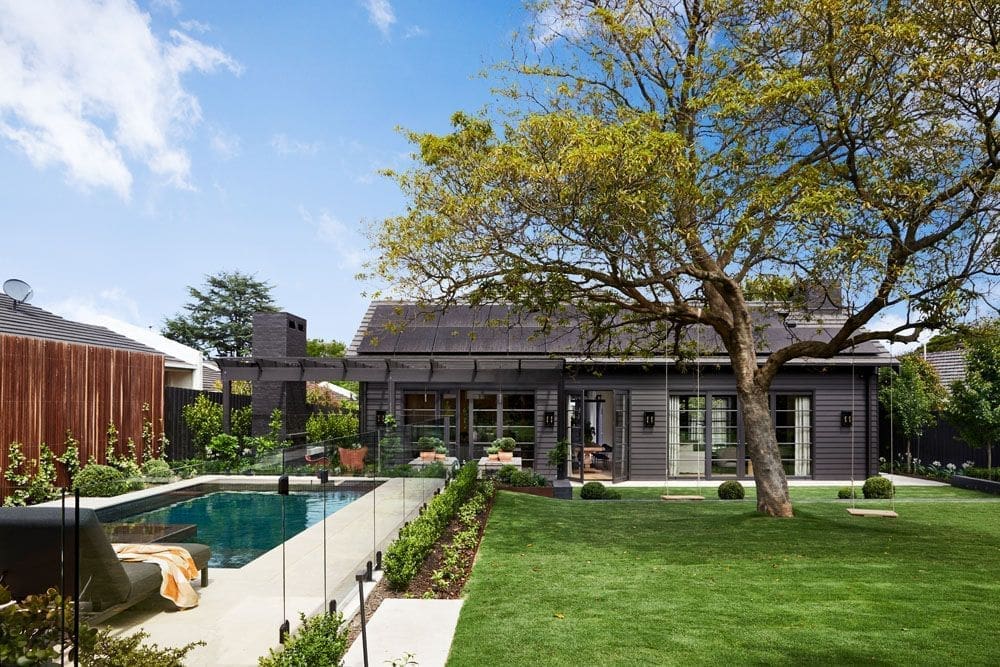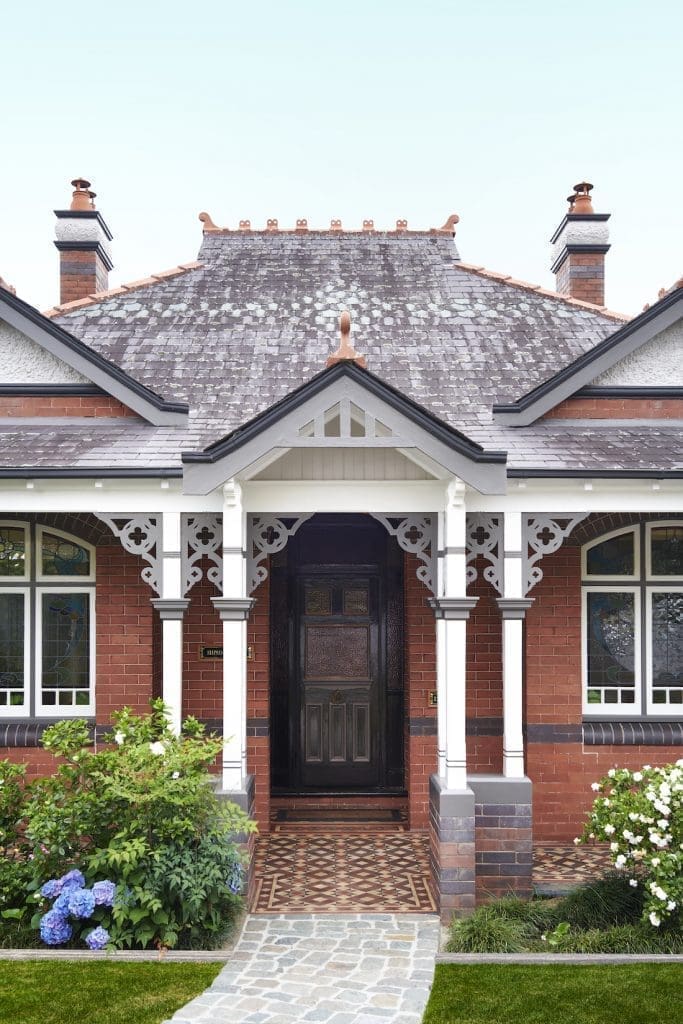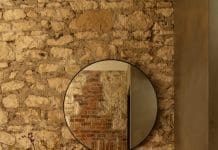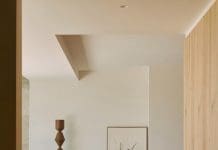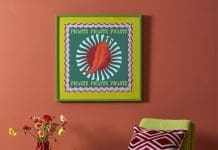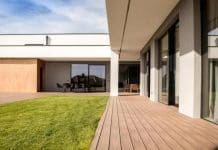When pulling together a materials palette for our home, a lot of time is spent deciding on the best flooring options, paint colours and joinery… but what about your roofing material? In Australia, where our climate can swing between frosty winters and extremely hot summers, it’s especially important to find a roofing material that can withstand extremes and fire-risk zones.
There’s a lot more than clay roof tiles or Colourbond metal sheeting to choose from. And for homeowners planning a major upgrade, a roof replacement project can be the ideal way to combine durability, style, and long-term value. Here are the top roofing materials in Australia, considering everything from durability and style to sustainability and cost.
Related article: Maximising your property’s potential: Benefits of building a granny flat
Related article: Everything you need to know about roof plumbing for home maintenance
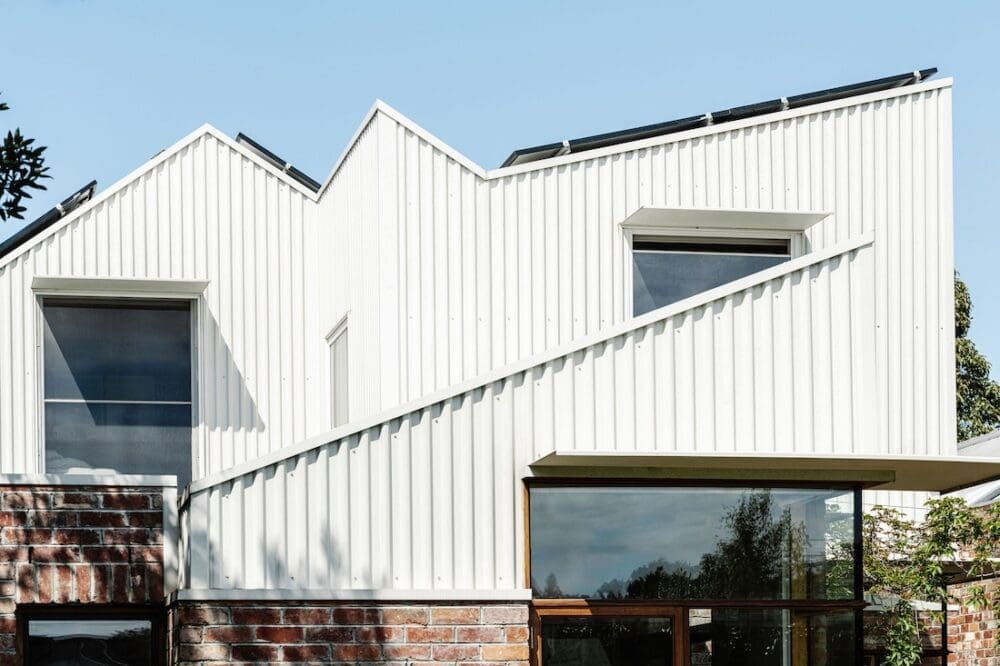
Comparing roofing materials
We’ll go into detail about each roofing material below but for now, here’s a quick glance of how they stack up.
| Material | Lifespan | Climate fit | Approximate cost* | Key benefits |
| 1. Colorbond® steel | 30–50 years | All (esp. coastal/bushfire) | $60–$80/m² | Lightweight, fire‑resistant, reflect heat, range of colours |
| 2. Corrugated Zincalume® | 30–50 years | All | $55–$75/m² | Durable, classic Aussie look, recyclable |
| 3. Standing seam metal | 40–60 years | All | $80–$120/m² | Seam‑tight, sleek, excellent waterproofing |
| 4. Concrete roof tiles | 50 years | Temperate/cool | $60–$95/m² | Low maintenance, thermal mass |
| 5. Terracotta clay tiles | 60+ years | Coastal/temperate | $75–$110/m² | Iconic aesthetic, natural insulator |
| 6. Natural slate | 80+ years | Cool/alpine | $150–$300/m² | Luxury look, fire‑proof, long lifespan |
| 7. Synthetic polymer tiles | 20–30 years | All | $40–$70/m² | Lightweight, recycled content, easy install |
| 8. Asphalt shingles | 20–30 years | All | $50–$80/m² | Budget‑friendly, variety of colours |
| 9. EPDM rubber membrane | 25–30 years | Flat roofs | $80–$100/m² | Seamless, great waterproofing |
| 10. TPO/PVC membrane | 25–30 years | Flat/low‑pitch | $85–$120/m² | UV‑resistant, heat‑welded seams |
| 11. Green (living) roof | 20–50 years* | Flat/low‑pitch | $150–$300/m² | Insulation, biodiversity, stormwater management |
| 12. Solar tiles & panels | 25–30 years | Sun‑rich regions | $200–$400/m² | Energy‑generating, integrated aesthetics |
| 13. Composite shingles | 30–40 years | All | $60–$100/m² | Impact‑resistant, low‑maintenance |
| 14. Thatch & bamboo | 15–20 years | Tropical/rustic | $80–$120/m² | Eco‑friendly, unique texture |
*Costs are approximate installed rates in AUD per square metre.
Roofing materials explained
1. Colorbond® and Zincalume® steel
A firm favourite when it comes to the best roofing material is Colourbond. It’s designed and tested for our unique environment and is available in a range of colours that beautifully complement your home’s aesthetic. Another comparable product that’s slightly more affordable, but said to be less durable, is Zincalume.
Why choose it? Australia‑made Colorbond is engineered for UV and corrosion resistance. In bushfire‑prone or coastal homes you’ll benefit from AS 3959 BAL compliance ad salt‑spray durability.
Pro tip: Opt for Light or Surfmist® shades for maximum heat reflectivity — helping reduce your cooling bills.

2. Standing seam metal roofing
Also available from Colorbond, this premium steel option deserves special mention! Shown below, it’s a premium roofing profile favoured in high-end architectural builds. It features continuous panels that interlock along raised seams, eliminating the need for exposed fasteners and giving a clean, streamlined finish. It’s highly durable and especially effective for modern homes with rainwater tanks, thanks to its seamless gutter compatibility.
Why choose it? Sleek lines, weather-tight joins, and excellent performance in wind and rain make this a standout for contemporary designs — especially where sustainability and aesthetics matter.
Pro tip: Standing seam is best installed by a specialist roofer. Pair with wall cladding in the same profile for maximum design impact.
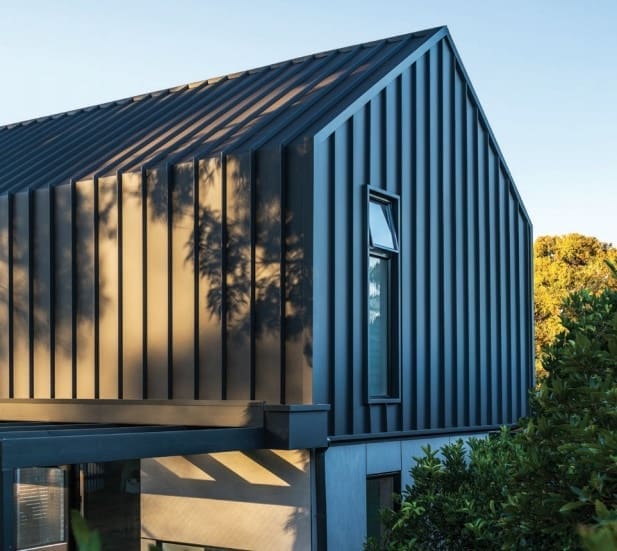
3. Concrete and terracotta tiles
A classic choice, tile roofing is known for its solid, heavyweight construction — offering excellent thermal mass that helps regulate internal temperatures. Concrete tiles are budget-friendly and available in a broad range of profiles and colours. Terracotta tiles, made from natural clay, offer enduring beauty and a Mediterranean appeal.
Why choose it? Tile roofing suits a wide range of home styles and performs exceptionally well in temperate and bushfire-prone regions (BAL-rated options available). Terracotta is also UV stable, keeping its colour over decades. Over time, if your concrete roof tiles fade and show signs of wear, a fresh coat from a trusted roof painting Sydney NSW company can refresh the look of your roof and help protect against UV damage. For homeowners in South Australia, companies like Five Star Roofing also provide reliable roof replacement and maintenance services tailored to local conditions.
Pro tip: Choose sarking beneath the tiles for improved insulation and moisture control, especially in cooler climates or high rainfall zones.
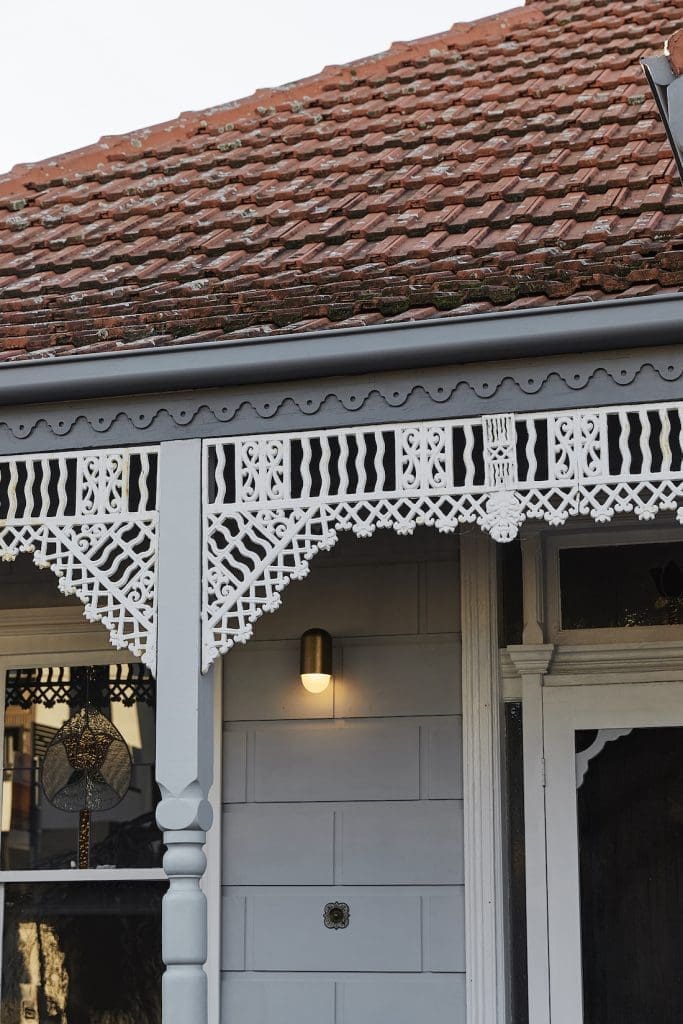
4. Natural slate
For timeless elegance and extreme durability, it’s hard to beat slate! Mined from stone and cut into uniform tiles, it gives homes a luxurious European aesthetic. Slate performs best in regions with cool, stable climates like the Southern Highlands or Adelaide Hills.
Why choose it? Natural slate can last over 100 years when properly installed. As well as durability, it offers a premium, fire-resistant and low-maintenance solution that adds instant value to heritage or luxury homes.
Pro tip: Your roof frame may need strengthening due to slate’s weight. It’s best to engage a structural engineer early in the planning.
5. Synthetic options
Synthetic roofing materials — like polymer tiles and composite shingles — are designed to replicate the look of slate, shake, or traditional tiles without the weight. Many contain recycled materials, making them a more sustainable and cost-effective option.
Why choose it? These lightweight alternatives reduce structural load and often have simpler installation requirements, helping to achieve a premium look on a budget.
Pro tip: Choose Australian-compliant products that have been UV-tested for our harsh sun, especially in exposed coastal or inland regions.
6. Asphalt shingles
Popular in the US, asphalt shingles are gaining traction in Australia thanks to their affordability and ease of installation. Lightweight and flexible, they’re ideal for roofs with complex shapes or multiple valleys.
Why choose it? A smart pick for renovators or multi-level homes, asphalt shingles suit pitched roofs and offer fast installation, with good acoustic properties and weather resistance.
Pro tip: Go for laminated or architectural-grade shingles with added UV protection for better colour retention in sunny states like WA or QLD.
7. Rubber and single‑ply membranes (EPDM, TPO, PVC)
For flat or low-pitch roofs, rubber membranes and synthetic single ply options are industry favourites. EPDM is a cost-effective rubber material, while TPO and PVC offer heat-welded seams for superior waterproofing.
Why choose it? Perfect for extensions, roof terraces, garages or alfresco zones, these membranes deliver robust performance in water-prone areas where standard roofing won’t suffice. If you’re planning a major renovation, here’s a good example of quality extension roofing work in metal profiles suited to Australian conditions.
Pro tip: Choose light-coloured membranes for better solar reflectivity — they’ll help reduce heat transfer into your home.
8. Green and living roofs
When Gina worked at an architectural firm in the UK, they won an innovation award for their green roof and it’s been on our radar ever since! Essentially a green or living roof (called a SuSDs roof in the UK) combines waterproof membranes with growing media and plants. The result is a living layer that acts as insulation and improves air quality. They’re becoming popular in eco-focused homes and urban environments.
Why choose it? Beyond thermal insulation and acoustic buffering, green roofs reduce stormwater runoff, encourage biodiversity, and offer a visually lush retreat.
Pro tip: Green roofs require a proper waterproofing layer and structural support — always consult a landscape architect or green roof specialist.
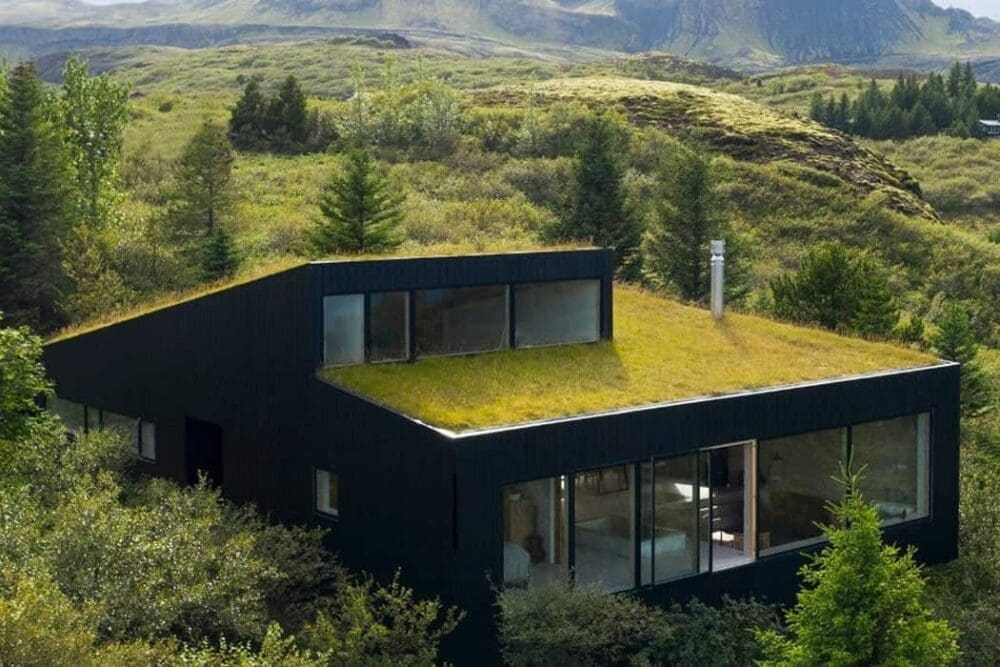
9. Solar tiles and integrated panels
Forget bolt-on panels when you can find solar tiles that integrate seamlessly into your roof for a clean, modern look. These innovative systems replace regular roofing materials and convert sunlight into electricity.
Why choose it? Perfect for new builds or major renovations where aesthetics matter. Solar roofs help future-proof your home while reducing energy bills, especially in high-sun zones.
Pro tip: Check state incentives and rebates to offset initial costs, and pair with a battery system for maximum energy independence.
10. Thatch and bamboo
Best suited to tropical homes or eco retreats, thatch and bamboo bring natural texture and organic charm. Installed by specialist craftsmen, they create a relaxed, resort-style aesthetic with excellent airflow.
Why choose it? With steep roof pitches and careful detailing, these materials offer natural insulation and a deeply unique look for tropical or culturally-inspired architecture.
Pro tip: Maintenance is key — regular treatment is needed to protect against pests, rot, and weathering in high-humidity areas.
How to decide on the best roof
You may need to weigh up a few things to decide on the best roofing material for your home. For example, aesthetics vs budget vs lifespan.
Top things to consider when selecting a roof material:
- Climate suitability: look for the best material to meet your climate, whether that’s wind, hail, UV or BAL requirements.
- Budget vs lifespan: think long‑term and consider whether higher up‑front cost can save you in ongoing maintenance or achieve better performance to save on energy costs.
- Structural capacity: some materials like slate and terracotta are heavier and may need additional roofing support structures.
- Aesthetic cohesion: your roof plays a bit part of your home’s overall appeal so choose a profile and finish that complements your home’s style.
- Sustainability: look for recycled content, local manufacturing, longer lifespans and end‑of‑life recyclability.
- Water management: stormwater runoff management is another factor, especially with complex or flat roof types. It’s important to plan proper drainage with downpipes and guttering — and in some cases, a trusted plumbers Sydney NSW service can help design solutions that reduce the risk of water pooling or internal leaks.
- Maintenance requirements: some materials like slate and green roofs need more regular care.
We hope this information helps you understand the different roofing options available. Do you have any questions about roofing we didn’t cover? Comment below and we’ll get back to you.
More building and reno advice
